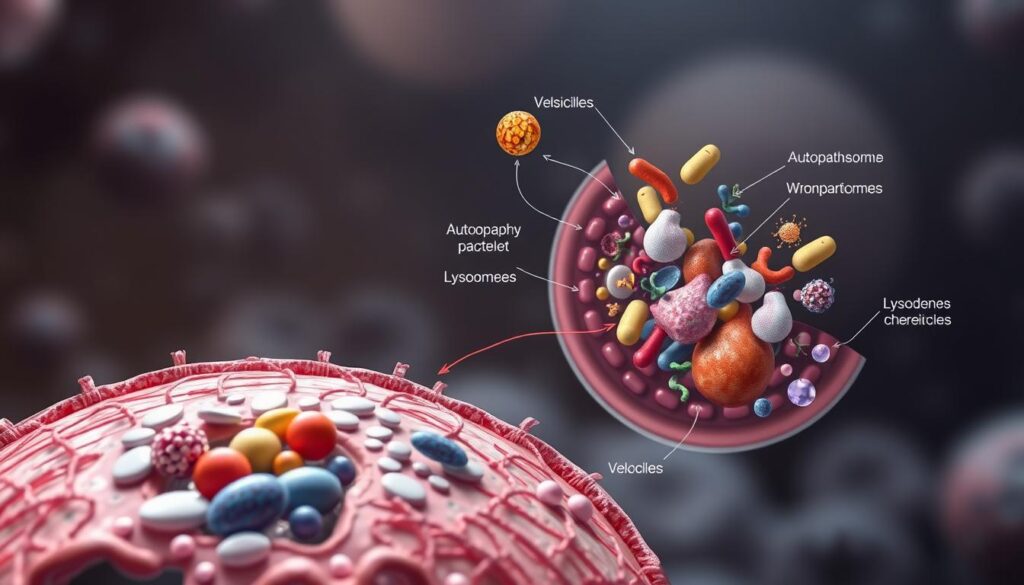Can skipping food for days really fix your health or does the danger outweigh the promise?
Water fasting means consuming only water for two or more days. Emergency physician Robert Glatter MD has seen life threatening cases and urges people to avoid it. Dietitian Trista K. Best MPH RD, notes that early weight change is mostly glycogen and water loss, not lasting fat loss.
Nutrition researcher Krista Varady, PhD, adds that there are no standard safety protocols and that refeeding can cause serious electrolyte shifts and low blood sugar. Short term appeal and viral posts can mask these risks.
This roundup will compare clinical observations, nutrition research, and dietitian perspectives so readers can weigh possible benefits against clear hazards. Safer food inclusive strategies are generally preferred for long‑term health and steady weight loss.
Key Takeaways
- Water fasting involves only water for multiple days and lacks standard safety guidelines.
- Emergency care reports show acute dangers, including severe electrolyte and blood sugar shifts.
- Early weight loss often reflects glycogen and water depletion, not lasting fat loss.
- Researchers warn about lean mass loss and refeeding complications.
- Safer, food‑inclusive methods are usually recommended for sustainable health and weight goals.
What doctors mean by water fasting and how it differs from other fasts
Water fasting is a strict intake plan where a person consumes only plain water for an extended period, typically measured in days rather than hours. In small clinical studies this regimen has ranged from 2 to 41 days with an average near seven days under close supervision.
How it differs from similar approaches:
Definition and scope
A true water fast allows no calories: no foods, juices, or caloric broths. Some protocols in research add minimal broths or diluted juices, but that changes the metabolic response and safety profile.
Liquid diets vs time restricted eating
Liquid diets provide calories and nutrients from shakes or soups. That intake alters protein and electrolyte balance and lowers acute risks compared with water only periods.
Intermittent fasting structures eating within a set time window often eight hours so people eat real food and simply reduce daily calories. That makes it less extreme and easier to monitor.
| Approach | Typical intake | Duration | Notes |
|---|---|---|---|
| Water fasting | Only plain water | 2–41 days avg ~7 in studies | No calories high monitoring need nutrient deficits rise with days |
| Liquid diet | Caloric liquids shakes, broths | Short to medium term | Provides nutrients different metabolic effects |
| Intermittent fasting | Regular foods within a window | Daily cycles hours | Reduces calories modestly lower acute risk |
| Short fast clinical tests | Usually water allowed | 8–24 hours | Common for labs hydration recommended to help draws |
Published research on multi‑day protocols uses small samples and clinical oversight. Because there are no universal safety guidelines, practices vary and risks rise after the first 24 hours. Clinicians track hours and days to decide when monitoring is required. Readers should note these definitions when they evaluate claims about weight or nutrition results.
Expert Roundup Medical experts warn against water fasting
Short clinical reports and controlled studies paint a consistent picture: multi‑day, water‑only protocols carry clear, observed harms and limited proven benefit.
Emergency medicine view
Avoid at all costs said Robert Glatter, MD, after treating severe electrolyte and low‑blood sugar events in the ER.
This stance is rooted in real cases where patients needed urgent care after several days of only water.
Nutrition research perspective
Researchers note the evidence base is small and often done under tight supervision. Trials do not reflect home use.
Key concern: lack of standard guidelines for duration, monitoring, and refeeding leaves patients at risk.
Dietitian consensus
Registered dietitians report rapid weight loss is mostly fluid and glycogen. Muscle loss is common without protein intake.
Rebound weight gain and disordered patterns often follow. Safer choices such as intermittent fasting with real food, are recommended for most people.
| Perspective | Primary concern | Typical advice | Patient groups at risk |
|---|---|---|---|
| Emergency clinicians | Life‑threatening electrolyte shifts | Avoid multi day water‑only plans | Anyone doing unsupervised multi day fasts |
| Nutrition researchers | Limited, supervised evidence | Do not replicate at home need guidelines | People with metabolic conditions |
| Dietitians | Unsustainable loss and rebound | Use structured, food inclusive approaches | Those prone to disordered eating |
Why clinicians call it risky the mechanism behind harm
The body follows a predictable metabolic path when intake drops sharply. First, stored glycogen is used for energy. Each gram of glycogen holds water, so that loss shows quickly on the scale but does not equal fat loss.
Severe calorie restriction glycogen and lean mass breakdown
After glycogen runs out, the body needs amino acids. If no protein enters, it breaks down muscle to supply essential building blocks.
This lean mass breakdown reduces strength and slows resting metabolism making lasting weight change harder.
Electrolyte shifts and effects on heart nerve, and muscle
Without dietary electrolytes sodium potassium calcium, and magnesium levels can fall or shift. These changes disrupt nerve signals and muscle contraction.
That instability can trigger palpitations, cramps, lightheadedness, and even dangerous heart rhythm problems. Low blood sugar or altered blood electrolyte levels also worsen fatigue and cognitive troubles.
Risk builds over time as nutrient deficits deepen. For these reasons, clinicians discourage unsupervised multi‑day water fasting and urge safer, food‑inclusive approaches for long‑term health.
Documented complications in research and clinical settings
Clinical reports and small trials have cataloged a range of serious complications that can occur during multi day, no‑calorie protocols.
Neurologic events:
Hypoglycemia seizures and other neurologic risks
Low blood sugar can develop after prolonged calorie reduction and lead to seizures, loss of consciousness, and even death if not treated quickly.
Case reports link prolonged fasting with sudden neurologic collapse in people who delayed care. Early signs dizziness, confusion, and worsening fatigue should prompt immediate evaluation.
Fluid and electrolyte problems:
Hyponatremia and dangerous shifts
Hyponatremia presents with headache, nausea, confusion, and may progress to brain swelling without urgent correction.
BMC analyses document hospital admissions for severe sodium derangements during multi day protocols, even in otherwise healthy patients.

Renal stress, dehydration, and uric acid rises
Dehydration and rapid solute changes strain the kidney and can raise uric acid levels. An eight‑day study observed dehydration low sodium, low blood sugar, and higher uric acid despite short‑term weight loss.
Cardiometabolic variability:
Blood pressure and cholesterol swings
Blood pressure and cholesterol can fluctuate during and after extended regimens, making management harder for people with heart or metabolic risks.
- Documented cases include hospitalizations for severe dehydration and sodium derangements.
- Small research cohorts are monitored closely unsupervised attempts raise risk for patients at home.
- Clusters of fatigue dizziness, and weakness often signal real harm not benign cleansing.
Bottom line: Recognize early warning signs and seek urgent care for neurologic symptoms or severe systemic changes. Supervision, monitoring, and prompt treatment reduce harm in the small clinical studies that do exist.
Refeeding dangers after a prolonged water fast
Reintroducing regular meals after a long period of only fluids can trigger abrupt metabolic shifts that overwhelm the body. Krista Varady PhD, cautions that after about 20 days the body may not handle glucose and fat well during refeeding.
Physiology matters. After extended caloric restriction adding carbohydrates and fat can cause rapid insulin surges and big electrolyte swings. These shifts affect blood sugar and other blood chemistry quickly.
Glucose and fat intolerance on reintroduction
Many people show marked intolerance to typical foods when eating resumes. Expect sugar and fat to cause nausea bloating, or dizziness at first. Those with type 2 diabetes face higher volatility in blood glucose.
How to recognize and avoid refeeding related risks
- Watch for edema weakness confusion, palpitations, or arrhythmias seek care immediately.
- Monitor electrolytes phosphate, potassium, magnesium during the early refeeding window.
- Reintroduce food slowly under clinical oversight: small, frequent servings with protein and salt.
- Avoid attempting multi day water fasting without a plan for supervised refeeding prevention is the safest path for long term health.
| Phase | Common signs | Immediate action |
|---|---|---|
| Early refeed | Nausea, lightheadedness, sugar swings | Small carbs with protein check blood sugar |
| Electrolyte shift | Weakness, cramps, edema | Measure phosphate, K+, Mg2+ replace as needed |
| Severe reaction | Confusion, arrhythmia | Emergency evaluation and IV support |
Who is at higher risk and should never try water fasting
A sudden move to days without food raises clear risks for many people with chronic conditions. This section lists groups where the potential harm far exceeds any short‑term benefit.
Type 2 diabetes
Why it matters: People with type 2 diabetes face high hypoglycemia risk during a prolonged fast. Refeeding can also cause sharp blood sugar swings and dangerous instability.
Kidney disease
Those with kidney impairment cannot handle fluid and electrolyte shifts well. Losses or sudden changes in salts raise failure and hospitalization risk.
Heart conditions
Shifts in potassium and magnesium can trigger arrhythmias and worsen existing heart disease. Patients with coronary or rhythm disorders are especially vulnerable.
Pregnancy, eating disorders, and other vulnerable groups
Pregnancy and lactation require steady nutrition prolonged restriction is incompatible with fetal and maternal needs. People with current or past eating disorders face severe psychological and physiologic harm from restrictive regimens.
- Older adults and adolescents have less metabolic reserve and higher complication rates.
- Those on diuretics, insulin, or multiple prescriptions should avoid DIY attempts.
- If you fall into any category above, consult your clinician about safer, supervised approaches to weight and health goals.
| Group | Main concern | Why DIY is risky |
|---|---|---|
| Type 2 diabetes | Hypoglycemia refeeding instability | Requires medication adjustments and close monitoring |
| Kidney disease | Electrolyte and fluid imbalance | High chance of dangerous solute shifts and hospitalization |
| Heart disease | Arrhythmia risk from K+/Mg2+ shifts | Can precipitate palpitations or life‑threatening rhythms |
| Pregnancy / eating disorders | Nutritional harm psychological risk | Unsuitable for growth, repair, and recovery |
What the current research really shows about water fasting benefits
A limited set of studies has documented temporary drops in blood pressure and markers of oxidative stress during multi‑day, no‑calorie protocols.
One cohort of 174 people with hypertension who fasted about 10–11 days saw nearly 90% reach normal blood pressure by the end. Small trials also report short‑term weight loss and lower oxidative markers.
These findings came from closely supervised programs with careful monitoring and staged refeeding. That context matters: benefits were measured in controlled settings, not at home.
Why effects often rebound after the fast
Durability is limited. Many markers return to baseline after regular eating resumes, suggesting the change reflects absence of intake rather than a unique treatment effect.
Reported fatigue and weakness are common during and after the protocol. Lifestyle and dietary improvements often deliver similar cardiometabolic reduction without the acute risks of multi day regimens.
- Evidence is small and not generalizable.
- Observed gains often reverse after refeeding.
- Careful evaluation is needed before claiming potential health benefits.
Autophagy detox and other claims vs evidence
Cellular clean up processes often get cited as a reason people try prolonged fasting. The idea is appealing: clean cells, better health. But the science is not that simple.
What the data say:
Animal data vs human evidence gaps
Laboratory studies show short periods without calories can increase autophagy in animals. Those controlled settings use precise timing and monitoring.
There is no published human research proving that multi‑day water fasting safely triggers clinically meaningful autophagy. Small animal findings do not translate directly to people.
Why detox claims miss the mark:
Why detox narratives can be misleading
The body already clears many toxins via the liver and kidneys. Extreme restriction is not required for those processes and can cause electrolyte and metabolic harm instead.
Practical takeaways:
| Claim | Evidence | Safer alternative |
|---|---|---|
| Autophagy boost | Animal studies limited human data | Balanced diet, exercise, sleep |
| Detox cleanses | No clinical proof for added clearance | Support liver/kidney with healthy habits |
| Quick health fix | Risks: electrolyte shifts, metabolic instability | Gradual, food‑inclusive plans with monitoring |

Before trying multi‑day water fasting, weigh the lack of human research on benefits against known safety concerns. Consult a clinician to discuss evidence‑based options that support cellular and overall health.
Weight loss from water fasting vs sustainable approaches
Quick wins on the scale often look appealing, but they usually come from short term fluid and glycogen losses. Those early changes are not the same as true fat reduction.
Rapid weight loss, water weight, and lean mass loss
Dietitians note initial loss reflects stored carbohydrate and bound water. Without protein intake, the body then breaks down muscle to meet needs.
Why that matters: losing lean mass lowers resting metabolism and makes keeping weight off harder after normal eating resumes.
Long term weight maintenance and behavior change
Sustainable plans favor steady fat loss and muscle protection. Intermittent approaches with real food typically cut ~500 calories per day and yield 1–2 lb per week while preserving more muscle.
- Contrast: rapid loss from water only protocols vs slower fat loss with food inclusive plans.
- Prioritize protein, fiber, and resistance training to protect lean mass.
- Set realistic timelines to avoid rebound weight regain.
Bottom line: for lasting results, focus on habit based nutrition and strength work rather than extreme, short term rituals like a multi day water fast.
Intermittent fasting as a safer food inclusive alternative
An eating schedule that limits hours, not foods, often improves adherence and lowers short term risks.
Time restricted eating basics and typical calorie reduction
Intermittent fasting usually centers on an ~8-hour eating window. Studies show that pattern tends to cut about 500 calories a day and often yields roughly 1–2 lb per week of weight loss.
Keep meals whole and protein rich during the eating window to protect muscle and satiety. This approach supports steady progress without the extreme harms linked to a multi day water fasting plan.
Allowed drinks: water black coffee, and unsweetened tea
During fasting hours you may sip zero calorie beverages. Common choices are plain water, black coffee, and unsweetened tea.
For clinical procedures, rules differ: a medical test fast typically permits only water. For everyday intermittent plans, caffeine is fine if you skip sugar and creamers.
- Common schedules: 16:8, 14:10, or alternate day versions to match lifestyle and work hours.
- Focus on whole foods, fiber, and adequate protein during eating windows to support muscle and steady energy.
- Hydration tip: drink water regularly and limit added sugars in beverages.
- If problems arise hunger, constipation , add gradual fiber and small adjustments to the eating window.
- Work with dietitians to tailor timing, calories, and macronutrients to your goals and health needs.
| Approach | Eating window | Expected calorie change | Typical outcomes |
|---|---|---|---|
| 16:8 | 8 hours eating / 16 hours fast | ~500 calories/day reduction | 1–2 lb/week preserves muscle if protein adequate |
| 14:10 | 10 hours eating / 14 hours fast | Moderate calorie cut | Gradual weight loss easier social fit |
| Alternate day modified | Eat normal one day, reduced calories next | Variable | Can work short term needs planning to avoid binges |
Hydration, electrolytes, and the risk of overdrinking water
Thirst tracks tightly with the brain’s fluid sensors, guiding most people to drink the right amount. Hypothalamic receptors sense changes and trigger ADH release to conserve fluids and keep serum sodium stable.
Why ADH matters: ADH reduces urine output when intake falls, helping maintain blood chemistry. During a prolonged fasting period that system still operates, but it cannot correct a large dilution from forced high fluid volumes.
Recognizing hyponatremia and when to seek help
Drinking excessive amounts to blunt hunger can dilute sodium and other electrolytes. Early signs include headache nause dizziness, and confusion. Severe cases bring seizures and brain swelling seek immediate care if those occur.
- Kidney strain: rapid shifts in intake can stress the kidney and worsen electrolyte levels.
- Other low electrolytes potassium, magnesium, calcium can cause weakness and fatigue.
- Electrolyte containing foods normally support balance a water only period removes that buffer.
Practical guidance: use thirst as your cue, avoid forcing large volumes, and limit attempts to drink water continuously to curb hunger. If you notice worsening mental changes or severe weakness get urgent evaluation. For tailored guidelines on safe intake during any extended trial consult your clinician.
Medical fasting for blood tests why water is encouraged
A brief pre test fast clears the immediate effects of recent meals and yields more consistent blood values. For many lab panels, clinicians request a short overnight fast to make results comparable across people.
Typical window: most guidance asks for about 10–12 hours without calories. This period is targeted and brief it is not a diet practice.
Why hydration matters for phlebotomy
Staying hydrated helps keep blood volume steady and improves vein visibility. Better veins lower the chance of repeat sticks and improve sample quality.
Water is generally encouraged other beverages especially coffee or flavored drinks can alter certain assays. Always follow provider specific instructions about permitted intake before tests.
- Confirm whether your test requires a fast many do not.
- Bring and drink water before your appointment unless told otherwise.
- Resume normal eating and fluid intake after the draw unless advised to delay.

Bottom line: medical fasting for labs is a short diagnostic step to reduce variability in blood levels. Clear instructions from your provider ensure accurate results and safe testing.
Why people still try water fasting despite the risks
Many people try extreme no food regimens because they want quick results and a dramatic story to share. Social pressure, viral trends, and hopes of fast weight change push readers toward risky plans.
Weight loss pressure, social influence, and spiritual motives
Some seek relief from high blood pressure or diabetes and treat a multi day water fast as a shortcut. Others pursue spiritual routines and confuse tradition with calorie only diets.
How to evaluate claims and credentials online
Anecdotes often omit harms. Short posts can highlight benefits while skipping supervision rebound or fatigue. Check credentials: MD, RD, or PhD matter, and watch for conflicts of interest.
Stories sell solid research and supervision guide safe change.
| Motivation | Common claim | Reality check |
|---|---|---|
| Weight pressure | Rapid loss | Mostly fluid muscle risk |
| Social media | Effortless clarity | Anecdotal risks omitted |
| Spiritual | Tradition overlap | Different goals not clinical treatment |
- Weigh small studies and sample size.
- Prefer supervised, food‑inclusive plans for safe progress.
If you’re tempted to try water fasting read this first
Before you try a multi‑day, no‑food plan, pause and read how oversight changes outcomes.
Medical supervision monitoring, and why DIY is dangerous
Multi‑day no calorie regimens require clinical oversight for labs, symptom checks, and safe refeeding. Without that monitoring, subtle electrolyte shifts can become emergencies.
- Key targets for checks: sodium, potassium, phosphate, magnesium vital signs, and blood glucose.
- Watch for early refeeding signs: edema, weakness, confusion, or rapid heart rate.
- DIY attempts lack rapid lab access and IV support if severe changes occur.
Supervision turns a risky experiment into a managed protocol unsupervised trials can end in urgent care.
Safer ways to personalize nutrition with a dietitian
Partnering with registered dietitians helps tailor plans that meet medical needs and goals. Many patients access counseling at low or no cost through clinics or community programs.
Practical alternatives include balanced meals, clear protein targets, fiber, and gradual calorie changes. These tactics promote steady loss and build skills meal planning, label reading, and consistent habits so results last beyond a short time period.
| Action | Why it helps | When to seek care |
| Lab monitoring | Detects electrolyte shifts early | Weakness, fainting, palpitations |
| Dietitian plan | Personalizes nutrition and pacing | Rapid weight or glucose swings |
| Gradual refeed | Reduces refeeding complications | Nausea, swelling, confusion |
United States context practical guidelines and patient centered advice
U.S. clinical guidance stresses that nutrition plans should be tailored to each patient, not one size fits all trends. Shared decision making and clear goals help align care with lifestyle, culture, and medical needs.
When to talk to your healthcare provider
Discuss any fasting plan including intermittent fasting before you start if you have chronic conditions, take medications, or have a history of disordered eating.
Ask about monitoring blood pressure, lipids, and glucose. Request medication review if you are on insulin, diuretics, or drugs that affect electrolytes or kidney function.
Evidence based strategies for heart and metabolic health
Focus on proven approaches: a Mediterranean style diet, reduced sodium for blood pressure, and fiber for lower cholesterol.
Combine a balanced diet with regular physical activity, adequate sleep, and stress management. Intermittent fasting with food can fit U.S. routines when paired with these habits and clinical oversight.
Key actions for patients:
- Track markers blood pressure, cholesterol, glucose to measure risk reduction over time.
- Seek referrals to dietitians, cardiology, nephrology, or endocrinology when needed.
- Remember: multi‑day, no‑food water fasting is not a recommended practice in U.S. clinical care.
Conclusion
Summing the evidence shows that dramatic, multi‑day elimination of calories produces fragile wins and real harms for many people. One clear example is water fasting, which can cause electrolyte shifts, low blood sugar, and rebound weight gain.
Short term scale changes rarely reflect lasting weight loss. Research and clinical reports show most gains reverse after refeeding, and claimed health benefits often lack durable proof.
Safer paths exist. Try tailored plans like intermittent fasting with adequate protein, steady calories, and slow reintroduction of food to protect muscle and energy.
Practical hydration matters: sip and drink water sensibly to avoid dilution of salts. Avoid forcing large volumes or sugary fixes that upset balance and add calories.
Make choices that support long term health, work with a clinician or registered dietitian, and favor steady habits over risky, short term rituals.





